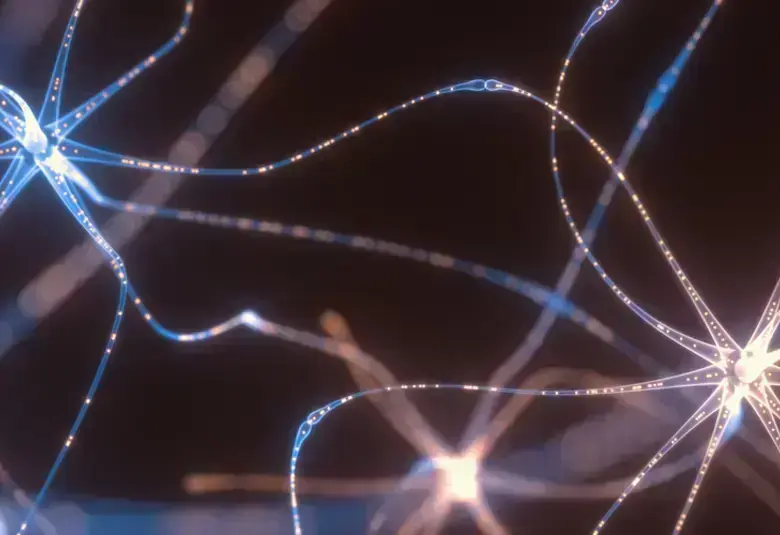An interview with Philip Gorwood, Professor of Psychiatry at the Hospital of Sainte-Anne and Paris Descartes University, France
프랑스 파리 데카르트 대학교(Paris Descartes University) 및 생트안 병원(Hospital of Sainte-Anne) 정신의학 교수 Philip Gorwood와의 인터뷰
What does it look like in clinical practice that one MDD patient in two does not respond to antidepressant treatment?
MDD 환자 두 명에 대한 임상 치료에서 한 명이 항우울제에 반응을 보이지 않았다면, 그것을 어떻게 해석하면 좋을까요?
Even among patients who say they are much better, we may find that sleep and concentration are still not good. Their sense of enjoyment in life has not been restored. We should listen, but we should also ask – about sleep, appetite, sex…
훨씬 좋아졌다고 말하는 환자들도 있지만, 그런 환자들에게도 여전히 잠을 자거나 무엇인가에 집중하는 데 문제가 있을 수 있습니다. 또한 여전히 일상 생활에서의 즐거움을 느끼지 못하고 있습니다. 환자들의 얘기에 귀 기울여야 할 뿐 아니라 , 질문을 통해 수면, 식욕, 성욕 등에 관한 회복여부도 파악해야 합니다.
Then we have to face the frustration of knowing that – for another group of patients, probably the majority – we are not fully resolving their problems. And the language they use to explain their distress is about function. “I am not like I was before; I don’t care about things like I used to; I can’t respond well enough to keep up with the family.” The explanation is that they are still depressed.
우리는 대다수 환자들이 안고 있는 문제들을 우리가 완전히 해결해주지 못하고 있다는 절망적인 현실을 직시해야 합니다1. 환자들이 자신들의 어려움을 설명하는 주된 부분은 기능에 관한 것입니다. “예전 같지 않습니다. 예전과 다르게 주변 일에 관심이 가지 않아요. 제대로 대꾸할 수가 없어서 가족들과 연락도 잘 안 합니다.” 이런 설명은 그들이 여전히 우울 상태에 있다는 뜻입니다.
Inadequate response to therapy is a great burden for patients, and also for society. Treatment has been given, treatment has been taken, but it has proved insufficient. So we have to add something.
치료에 대한 불충분한 반응(inadequate response)은 환자들에게는 물론이고 사회에도 큰 부담입니다. 환자에게 치료가 이루어졌고 환자가 치료를 받았으나, 그 치료가 충분치 않은 것으로 판명되었으므로, 이제 우리는 뭔가를 추가해야 합니다.
At what point do you judge that response has been inadequate?
반응이 불충분했는지 여부를 어느 시점에 판단하십니까?
Some say you can have a feel for what is happening, two weeks after starting a new treatment, some two months. There are as many guidelines on timing as there are ways of treating depression. But we are moving towards more rapid assessment. The crucial thing is that we don’t leave depression untreated – or inadequately treated – for too long.
어떤 변화가 일어나고 있는 지에 대해 감지할 수 있는 시점이 새로운 치료를 시작하고 나서 2주 후라고 말하는 사람들이 있는가 하면, 어떤 사람들은 그 시점이 2개월 후라고 말합니다. 평가 시기에 대해서는 우울증을 치료하는 방법들이 다양한만큼이나 여러 지침이 있습니다. 그러나 우리는 보다 빠른 평가를 지향하고 있습니다. 중요한 것은 우울증을 오래도록 치료하지 않거나 치료가 불충분한 채로 방치하지 않는다는 것입니다.
The appropriate time is probably 4-6 weeks. But you can get some idea at two weeks. This doesn’t necessarily mean a hospital visit. Patients can fill in scales at home, and be followed up with a phone call. The presence of a 20% improvement at two weeks, even if the patient does not see much benefit, suggests there may be a response at four weeks, and remission at three months. I tell the patient that, since good news is good for compliance.
치료효과 평가의 적절한 시점은 아마 4~6주 정도일 겁니다. 그러나 2주째에도 어느 정도 윤곽을 잡을 수 있습니다. 이는 환자가 반드시 내원을 해야한다는 것을 의미하지는 않습니다. 환자에게 집에서 검사지를 작성하게 하고 전화통화로 추적 조사를 할 수 있습니다. 환자가 많은 치료효과를 보이지 않더라도, 2주 째에 20%의 호전이 있으면 4주째에 충분한 반응을 보일 수 있고, 3개월이면 관해 상태에 이를 수 있다고 짐작할 수 있습니다. 저는 환자에게 이러한 사실을 얘기해주는데, 좋은 소식은 환자 순응도에도 긍정적으로 작용할 것이기 때문입니다.
The absence of a 20% improvement at two weeks, on the other hand, does not mean that there will not eventually be a response. But zero improvement means there is a very small chance.
반면, 2주째의 호전도가 20%에 미치지 못하는 것이 결과적으로 효과가 없을 것이라는 의미는 아닙니다. 그러나, 호전도가 0인 것은 치료 효과를 기대하기 매우 어렵다는 것을 의미합니다.
That can be shared with the patient, though without being too pessimistic. “Let’s find another treatment which we hope will do better.” It is also helpful to focus on the symptoms that have the greatest impact on the patient, and put energy into improving them. This means shared goal-setting. This is not just politeness. It has an impact on efficacy.
이런 내용을 환자와 공유할 수 있는데, 너무 비관적이지 않게 얘기해야 합니다. “더 나은 치료법이 있을 테니 찾아봅시다.” 환자에게 가장 큰 영향을 미치는 증상들에 초점을 맞춰 그러한 증상들의 개선에 노력을 기울이는 것도 도움이 됩니다. 이는 공동의 목표를 설정하는 것이지 예의의 문제가 아닙니다. 이와 같은 목표 설정은 유효성(efficacy)에 영향을 미칩니다.
Shared decision-making
함께 하는 의사결정
Giving patient options for treatment also makes a difference. Then, if there are side effects, it is not “Because you told me to take the drug, Doctor”. Sharing the decision means sharing the responsibility. And that may improve acceptance of side effects.
환자에게 치료 선택권을 주는 것으로도 치료 효과에 변화를 줄 수 있습니다. 부작용이 있는 경우, “의사 선생님이 저에게 그 약을 복용하라고 말했기 때문이에요” 라고 말하지 않을 것입니다. 결정을 공유한다는 것은 책임을 공유한다는 의미입니다. 그렇게 되면 환자가 부작용을 감수할 수 있는 여지가 커집니다.
One major question is how best to help patients with a response stuck at around 20%. The first task is to assess the impact. There may be loss of hope. There is also frustration, which clinicians may share – though we are unlikely to express it. The family too has been expecting relief, and is frustrated that it has not come.
한 가지 중요한 문제는 환자의 반응도를/호전도가 20% 정도에서 머물러 있는 환자들을 도울 최선의 방법이 무엇이냐는 것입니다. 맨 먼저 할 일은 영향을 평가하는 것입니다. 희망이 없다는 느낌이 들 수 있고, 표현은 하지 않겠지만 우리 임상의들도 환자와 함께 실망감을 갖습니다. 가족들도 증상의 경감을 기대하고 있다가 기대하던 결과가 아니어서 실망하게 됩니다.
The patient who has had some response – but not enough – has put time and effort into getting better. They have tolerated side effects. If you decide to stop the drug you are saying all this was for nothing. So you don’t want to go back to scratch. You want to build on what has been achieved. Hence you keep the existing treatment and add something new, explaining that it is in the hope of enhancing response and with the aim of restoring normal life.
충분하지는 않지만 어느 정도 차도를 보였던 환자들은 더 나아지기 위해 시간과 노력을 기울였습니다. 그들은 부작용을 감내했습니다. 주치의가 환자의 약 복용을 중단하기로 결정한다면, 이는 환자에게 그동안의 모든 노력이 소용 없다는 의미로 전달됩니다. 그래서 주치의는 처음으로 돌아가 환자에게 상처주는 것을 원치 않으며, 그동안 이루어진 성과를 확대해 나가려고 하죠. 따라서 기존의 치료를 유지하고 거기에 새로운 것을 추가하면서 반응도를 높인다는 기대와 정상 생활을 회복시킨다는 목적으로 치료가 진행된다고 설명합니다.
In our department, we have good resources for cognitive behaviour therapy and mindfulness. Patients are keen on these interventions and there is benefit. But they require effort and energy which the patient may not have. In terms of additional drug treatment to build on efficacy, there is ketamine – but this has safety issues. And lithium, for which there is good evidence of efficacy. But lithium is very difficult to manage in everyday practice. So most frequently we use antipsychotics, which double the chances of remission.
저희 과에는 인지행동 치료(cognitive behaviour therapy) 및 마음 챙김(mindfulness)을 위한 좋은 자원이 있습니다. 환자들은 이러한 방식에 관심이 많고, 실제로도 효과가 있습니다. 그러나 이러한 치료에는 환자에게 부족할 수도 있는 노력과 에너지가 필요합니다. 치료의 효과를 높이는 추가적인 약물치료로 케타민(ketamine)이 있는데, 이 약은 안전성에 문제가 있습니다. 리튬(lithium)도 유효성을 보여주는 충분한 증거가 있지만 일상 생활에서 관리하기가 매우 어렵습니다. 그래서 우리는 관해 가능성을 배가시켜주는 항정신병 약물(antipsychotics)을 가장 자주 사용합니다.
Within this class, the different agents are very different. One guide would be to tailor choice to a patient’s remaining symptoms. Another is to relate the tolerability profile of the drug to any predispositions the patient may have, for example to metabolic syndrome. And it is good to systematically assess anxiety in depressed patients and avoid akathisia-inducing agents in anyone with high levels.
이 계열의 약물들은 각기 큰 차이가 있습니다. 한가지 가이드는 환자에게 남아있는 증상에 맞춰 약물을 선택하는 방식입니다. 또 다른 방식은 약물의 내약성을 환자의 소인, 예컨대 대사증후군에 걸린 것과 결부시키는 것입니다. 그리고 우울증 환자의 불안감을 체계적으로 평가하여, 불안 수준이 높은 환자인 경우 정좌불능(akathisia) 유도 제제를 피하는 것이 좋습니다.
The past is a guide to the future
과거 병력을 근거로 치료 방향 정하기
The best predictor of inadequate response is a patient’s past history: the more episodes, and the longer the episodes, the more difficult it is likely to be. One month and nine months is a different story. It is about lifetime burden. Anxiety too is a factor: anxiety is part of depression, decreases the chance of treatment success, and needs assessment. Delay in starting treatment is another: once you are sure of the diagnosis, “wait and see” has a very negative impact on outcome.
불충분한 반응(inadequate response) 여부를 알아보기에 가장 좋은 예측요인은 환자의 과거 병력입니다: 에피소드를 겪은 횟수가 많을수록, 에피소드의 지속기간이 길수록 치료는 더 어려울 수 있습니다. 1개월인 경우와 9개월인 경우는 전혀 다른 얘기입니다. 그것은 일생의 부담에 관한 것입니다. 불안감도 하나의 요인입니다: 불안감은 우울증의 한 요소로서 치료 성공의 가능성을 줄이고 평가를 필요로 합니다. 치료시작 시점이 지연되는 것도 하나의 요인입니다: 진단을 확신하면서도 “지켜보자(wait and see)”를 태도를 취하는 것은 결과에 매우 부정적인 영향을 미칩니다.
Our correspondent’s highlights from the symposium are meant as a fair representation of the scientific content presented. The views and opinions expressed on this page do not necessarily reflect those of Otsuka and Lundbeck.




